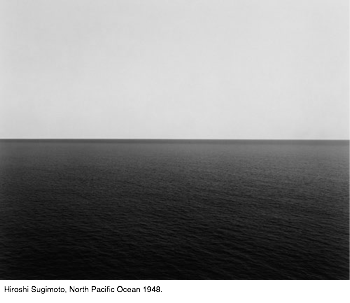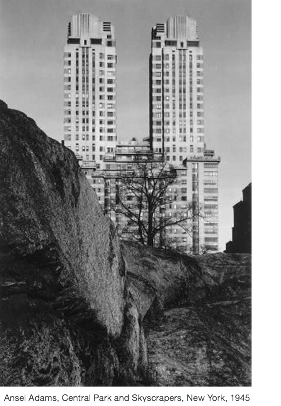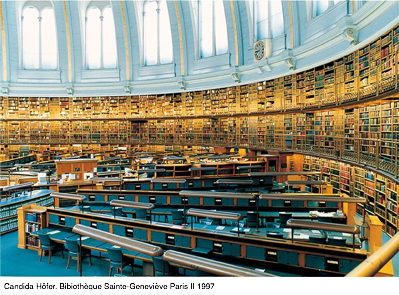Some time ago I had a long conversation with a photographer about landscape; I insisted on eliminating the adjectives “natural”, “industrial” or “urban” to differentiate what we have or pursue in front of us. That conversation ended as a dialogue between the deaf, a conceptual disagreement one might say.
Teaching landscape photography, nowadays, cannot be reduced to the titanic search of the unaltered natural landscape, in which we will be, almost always strangers, tourists, innocent observers. This search guided one of Hiroshi Sugimoto’s most interesting series, Seascapes; but Sugimoto did not consider the definition of landscape, his subject was time, creating with his time machine images that would question us, not in what the landscape is or should be, but in the possibility of having before our eyes that first landscape observed by the first man.
Ansel Adams, on the other hand, struggled to stop being a stranger to the landscape; his purpose was to understand it, to humbly surrender to it and let it speak to him and teach him, and then, from that understanding, to try to record it as accurately as possible. Ansel Adams’ images, like good literary reviews, create in us the urgency to experience the natural landscape. Such was Adams’ identification with the mountainous landscape of California that, in some of his series, such as the one in New York, the great skyscrapers emerge as enormous mountains.
Between the consubstantiation of Ansel Adams and the abstraction of Sugimoto, a spectrum of visual experiences opens up before us, that which we routinely avoid or seek, our landscape.
In 1975, eight American photographers, accompanied by the Germans Bernd and Hilla Becher, presented an exhibition curated by William Jenkins at the George Eastman House called New Topographics: Photographs of a Man-Altered Landscape. The images were stripped of all preciousness and reduced to an essentially topographical state, avoiding the aspects of beauty, emotion and opinion; signifying a paradigm shift in the world of Photography, not very noticeable at the time, but creating a decisive influence on the way we look at and photograph the landscape.
Perhaps one of the most unusual aspects of the photographs of New Topographics was that they were considered landscapes: abandoned buildings, suburbs under construction, deserted streets of big cities, electrical lines that zigzagged through the vegetation. These photographers were more interested in showing how man had altered the landscape, than in insisting on his ideal natural presentation; resulting in their work being a mixture of landscape photography and documentary, which put the focus on the human being, but with (almost) no human figure present in them.
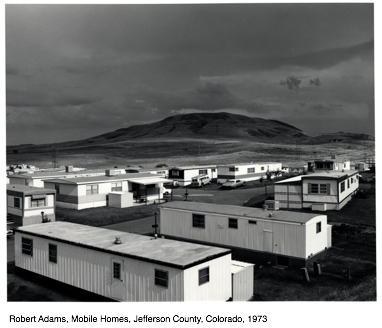
The Americans Robert Adams, Lewis Baltz, Joe Deal, Frank Gohlke, Nicholas Nixon, John Schott, Stephen Shore, Henry Wessel, Jr. and the German couple, Bernd and Hilla Becher were showing us with their images a world closer to our daily experience and inviting us to call it landscape, without adjectives. Their stark images, beautifully printed and displayed as works of art, of that mundane topography were strangely fascinating and were, on the one hand, a reflection of the increasingly urbanized world, and on the other, a reaction to the tyranny of idealized landscape photography. In a way, these new “topographers” were photographing against the tradition of nature photography founded by Ansel Adams and Edward Weston.
This approach is that of a discursive construction of the landscape, even though it reflected, incidentally, a progressive destruction of the land. The land is destroyed, but the landscape does not disappear, in fact a new landscape is built, whether we like it or not, and of that “new” landscape as well as the other wild and elemental landscape, we should take care of it. Ansel Adams with that image of the skyscrapers from Central Park was, perhaps unintentionally, anticipatory.
In 2013 I made a photographic project called “No-Ávila”, the idea was not to deny the omnipresent mountain that defines the north of the city of Caracas, but to approach the mountains of Petare, one of the largest poor neighborhoods in Latin America, with a “landscape” approach. For years the landscape of Petare was presented to me in my usual circulation and the hill was changed, by a social dynamic, in a similar way as the Avila has been changed by an environmental dynamic. The result is a new topography.
In the exhibition I received many positive comments from the inhabitants of Petare who had never seen their hill from that perspective, some had even recognized their houses in the distance; however the comment that most motivated me was from a couple who indicated that the exhibition had upset them very much because I was forcing them to see what they did not want to see. I began to understand this “forcing” as a success, perhaps because the aesthetical resolution of the images, the formal attachment to the approach of traditional landscape, had deceived them and when they approached these images they progressively discovered what we associate with one of the greatest social catastrophes in Venezuela.
How can we call that landscape that resembles the Avila mountain but is not ? a question without a categorical answer and hence the name Non-Avila as a provisional and decidedly provocative denotation. What was clear to me was that the solution was not to add an adjective to that landscape and call it, for example, “Urban Landscape”. Definitely not, it is my landscape if I look to the south, just as it is the Avila if I look to the north. We must be able to approach both landscapes as photographers, if we want to call ourselves landscapers.
The influence of New Topographics, which we see in works such as those of Andreas Gursky, Paul Graham or Candida Höfer, has not only broadened the spectrum of the study, understanding and visual approach to landscape, but has allowed the inherent problems in these new topographies to be addressed. Just as naturalist photography allows us to visualize changes in fauna and flora, river courses and seasons, works such as those by Gursky, with a decidedly topographical orientation, illustrate the dynamics of space use in work and business environments.
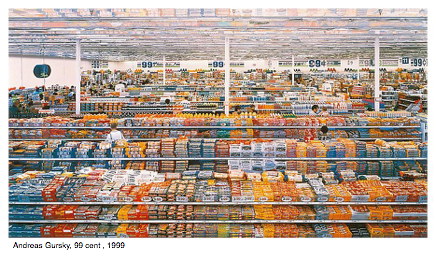
For her part, Höfer goes in another direction, showing us the emptiness and apparent nonsense of the buildings in her work on the architecture of absence. Despite their great sociological and anthropological weight, can we deny these works the category of landscape, I think not, but deep down the issue of categories is not so important if they serve to expand horizons and not to reduce them.
The consciousness created by New Topographies does not cease to represent an irony in the face of the proposals of Gursky or Höfer, and even more so if we add Reimer Bonham’s work on what he calls the “man-mutilated desert”. These beautifully made images, exhibited under the standards of museums and galleries, represent realities that are the fruit of man’s ambition and irresponsibility. Apparently destructive processes actually build other realities; they perfectly respond to the law of conservation of matter, which states that matter cannot be created or destroyed, only transformed: new realities and new topographies.
![]()

